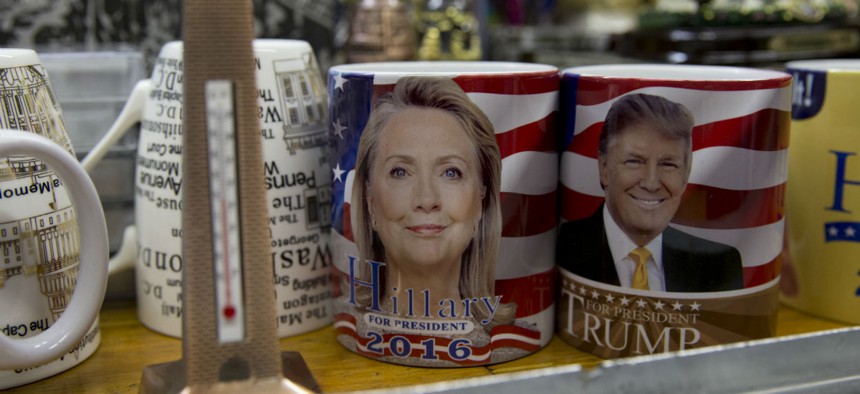
Carolyn Kaster/AP
Campaigns Spending 50 Percent More to Send Ads Through USPS in 2016 Cycle
Postal Service outreach efforts paying dividends, still short of targets.
Political campaigns are increasingly sending advertisements through the mail, according to the U.S. Postal Service, which said the uptick has been a boon to its revenue.
Political mail revenue jumped to $268 million from October 2015 through July 2016, up more than 50 percent from October 2011 through July 2012, when the total was $176 million. The Postal Service has emphasized political mailing as a growth opportunity, and has noted it left opportunities on the table during the 2012 election cycle.
The agency started planning for this election cycle earlier than in previous years and has developed relationships with key players in the industry. USPS has held training sessions with employees on selling and improving the political mail business, and has developed an “intelligent mail barcode” tool to give mailers better tracking abilities.
The Postal Service also provided campaign managers and consulting firms with “senior-level” USPS points of contact to “keep the lines of communication open and assist in resolving issues,” the agency told its inspector general earlier this year. Postal officials have spoken at and sponsored political mailers’ conferences and created special tools for the agency's sales team to target its efforts to meet specific needs across the country.
Postal management thought those steps would help even more than they have, setting the goal of doubling the $525 million in revenue generated in total during the 2012 presidential cycle.
In March, the postal IG warned slower mail delivery and worsening service quality could derail the latest efforts, despite the agency’s “comprehensive 2016 political mail strategy.”
In meeting with political mailers, the IG found some businesses described the Postal Service’s recent performance as “abysmal.” A whopping 75 percent of the mail service providers with whom the auditors spoke voiced concerns over the agency’s operations. A USPS official conceded to the IG that concerns over missed delivery standards “have led many mailers to shift from mail to other forms of advertising.”
The sales director for a San Diego-based political mailing company, U.S. Mailing House, put his complaints more bluntly to Government Executive earlier this year.
“The equipment is old and the employees are fat and lazy,” said the sales director, whose company delivers 1 million pieces and four truck loads each day for clients across the country. He added the problems have increased “dramatically” in recent months and years.
With revenue up 50 percent, however, USPS efforts appear to be paying dividends. The Postal Service is continuing to promote its political mail business, releasing last week a Summit Research survey it commissioned that found 54 percent of “swing voters” read political mail “immediately upon receiving it.” An additional 24 percent of respondents said they save the mail to read it later.
Nearly six in 10 respondents said campaign mailers are either “very” or “somewhat” helpful in deciding how to vote, narrowly beating out television, online and email advertisements.
Cliff Rucker, USPS’ vice president of sales, who previously voiced concerns to the IG about letting political revenue slip through the cracks, expressed optimism his agency had demonstrated the value of its services.
“When political races are tight, campaigns need to know what influences swing voters,” said. “Political mail spending has increased nationally by 50 percent since the last presidential election. As campaigns use more mail, it’s all the more reason to explore mail’s impact.”
The Summit Research poll surveyed 1,398 adults from Aug. 11-22.
NEXT STORY: The 'Quid Pro Quo' on Hillary Clinton's Emails







